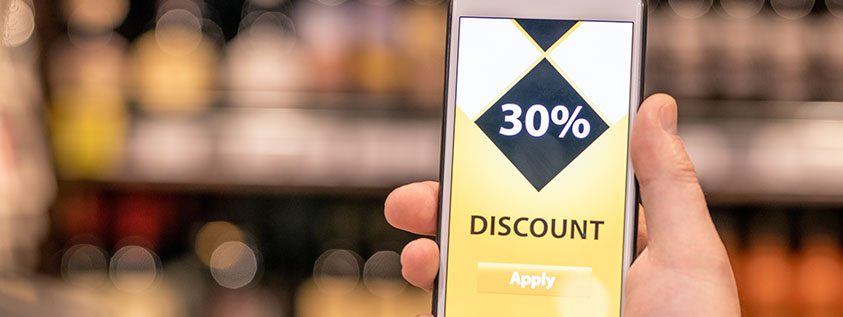Extrinsic motivation is everywhere, and there is a reason for it. It is an easy and powerful way to feel motivated. In this article, we discuss why it is essential and how to use this form of motivation in your daily life.
In this Article:
What is extrinsic motivation?
Extrinsic motivation is a type of motivation that uses external rewards to complete an action. The word “extrinsic” means “coming from the outside”. In this sense, extrinsic motivation comes from the environment or outside forces and not from within the mind.
Any human behavior done for an external reward is extrinsically motivated. A person becomes motivated by hearing, seeing, smelling, tasting, or touching the reward. A clear example of an external reward would be working hard on a project to receive your boss’ recognition.

Types of external rewards
It is good to understand the types of external rewards that exist to understand extrinsic motivation. There are two types of external rewards: tangible rewards and non-tangible rewards.
Tangible rewards
Tangible is anything that you can touch, feel, or see. Money is a tangible type of reward. Typical tangible extrinsic rewards are:
- Money
- Stickers
- Food
- Hugs
- Points
One very common tangible reward is money. It is a prevalent example. If you get paid, that is an extrinsic motivation to do your job. An extrinsic reward can also be getting more money when you keep up the performance. Therefore, using tangible rewards as an extrinsic motivator can be very costly for the motivator.
Non-tangible rewards
Non-tangible rewards are non-physical. A smile from someone, for example, is a non-tangible type of reward.
- Praise
- Fear
- Punishment
- Excitement
- Love
Fear and praise are common non-tangible rewards. When someone praises you, you get a “prize” for doing something good. You get a compliment that comes from the outside and makes you feel good on the inside. A compliment will increase motivation when a person cares about getting the compliment. Next to this, if praise feels insincere, it will also not work. If you want to motivate people intrinsically, a compliment is a cheap way to encourage the person.
Why can extrinsic motivation be insufficient?
Extrinsic motivation modifies a behavior but does not create passion. This means that if somebody doesn’t love what he or she does, extrinsic motivation will not be enough. In the end, that person will only do the bare minimum to get the reward. Without passion, the boredom of the task eventually leads to the fact that the extrinsic motivator is not enough.
How can extrinsic motivation make you less productive?
Extrinsic motivation often creates stress to perform, and stress causes you to be less happy because it links to decreased serotonin and dopamine. Next, a decrease in serotonin and dopamine decreases learning, good memory, and creativity. Without creativity, for example, it will be harder to accomplish the task you were supposed to do.
Extrinsic motivation works worse for activities related to
- Art
- Math
- Advertising strategies
- Writing
- Love
- New strategy
Of course, depending on the characteristics of the activity, you might need -or not- creativity to perform it. For example, if you already know what you want to write, creativity is not that necessary.
How can extrinsic motivation help you be more productive?
Extrinsic motivators increase productivity when stress does not have an impact on the results. When productivity and excellent memory aren’t critical, more external motivation tends to improve the output of the outcomes. Extrinsic motivation is good for physical work, like doing the dishes because you can focus on the task itself, and stress doesn’t influence the job.
Extrinsic motivation works best for activities such as
- Running
- Programming
- Data entry
- Racing
- Building
Of course, these activities sometimes need creativity, and therefore, too much stress can also hurt the outcome of this activity. Extrinsic motivation might work very well for activities that need physicality and not creativity, such as running or biking.
How to use extrinsic motivation?
It’s important to realize that extrinsic motivations are not necessarily bad. If they are used correctly, you can get things done. External motivation is best used when you have a clear goal in the activity. If you want someone to do something specific, extrinsic motivators can often be very helpful. For example, asking someone to wash your brand-new sports car and offering them a day to drive in it as a return.
Differences between intrinsic and extrinsic motivation
Intrinsic motivation is the opposite of extrinsic motivation; it means that an action has an internal motive rather than coming from the outside. However, the difference between intrinsic and extrinsic motivation can be subtle and sometimes hard to catch.
What is intrinsic motivation?
Intrinsic motivation is a force that comes from the inside of a person to encourage him or her to do something. For example, intrinsic motivation is caused by your interest in finishing a task. Or the goal of the activity itself, like running to complete a marathon to prove something to yourself. Intrinsic motivations come from doing something for its own sake. It is a very powerful type of motivation because it drives itself. Intrinsic motivation comes from within a person, instead of coming from external factors.
Some common examples of internal motivation are feeling stronger, feeling healthy, feeling complete, and feeling happy. People don’t want to feel complete for praise or money, they just want to experience a good feeling during or after it.
Why is extrinsic motivation less important than intrinsic motivation?
Extrinsic motivation comes from external motivators, and external motivators often come from a limited source. For example, the praise you get from people and the company’s budget will often run out at one point. At some point, the company will stop growing and the number of people interested will become less too.
Intrinsic motivation will stay
Intrinsically motivated human behavior will often stay and last longer. Let’s suppose that a person enjoys drawing or finds scoring with basketball fun. They will enjoy this and keep on doing it without any need for a limited supply of rewards. Doing the activity is their reward. People who have an intrinsic interest in doing a task will often work harder. They will also do it in their free time because they enjoy doing it.
Intrinsic motivation is extremely powerful due to the fact that it is self-sufficient. Human resource managers often like to hear that you enjoy doing a job because it’s your passion, so they can count on intrinsic motivation to get through the challenging period.
The mix of extrinsic motivation and intrinsic motivation
Extrinsic and intrinsic motivations often go hand in hand. Sometimes it is fun to do something that also has an extrinsic reward. For example, when you get money and a bonus to do your job, you will have extrinsic rewards, and if you enjoy the flow and challenge of your job, you will also have intrinsic rewards.
When extrinsic motivation undermines intrinsic motivation
Extrinsic rewards may start to undermine intrinsic motivation. In other words, you can lose intrinsic motivation because of extrinsic motivation. This is called the overjustification effect. Extrinsic motivators may cause previously enjoyable activities to lose their appeal.
When you give someone large extrinsic rewards for something they would already do for intrinsically motivating rewards, the intrinsically motivated rewards become less important. At one point, they will only do it for the extrinsic rewards, and this way, extrinsic rewards can take over.
Because extrinsic rewards are often limited, the loss of the extrinsic reward will also take away the motivation to do the task. For example, losing a wage for playing basketball will demotivate someone to keep on playing.
The overjustification effect shows that it is important to balance extrinsic and intrinsic motivations. Companies often try to combine both types of motivation to keep employees happy, and people will have a bigger chance to stay with the company.
Have you ever heard the phrase “Money isn’t everything”? In a manner, relying on extrinsic incentives to encourage ourselves to finish a project, might permanently deplete our enthusiasm for it.
How to intrinsically motivate someone with extrinsic motivations
Providing positive feedback is one of the most effective methods to increase motivation. With feedback, you can use extrinsic rewards to create intrinsic motivation. Tell the person the task has a purpose and a goal that is bigger than themselves. Intrinsic motivation contains autonomy, mastery, and relatedness.
Autonomy
Use external rewards that create autonomy within the person. Tell them where the work leads and how it will benefit them. If the work moves them ahead in their career, tell them how it will create new opportunities.
Mastery
With mastery, people will be grateful for recognizing that they have done an excellent job. This will make them feel competent. This type of reward is effective if the person works hard to become better at something. So that is why it’s good to recognize other people’s mastery.
Relatedness
Intrinsic motivation can also increase when someone feels a social connection to a larger group. When people feel a part of a group, they will want to work harder for the greater good. We all like to feel that we are needed and wanted.
Give rewards that help a person get into a flow state
Give external rewards to help someone get into a flow state. A flow state is a state of mind where we feel most motivated and creative. A flow state happens when people are concentrating and immersed in a task. People often say they love the feeling of “being in the zone”. Flow is an experience that can happen with any activity, from working to playing sports or socializing.
When people get into a flow state, they are highly motivated by the activity itself. When someone gets into a flow state, the activity makes them happy and keeps them going. Giving external rewards that can help them achieve a flow state will increase their intrinsic motivation. For example, you can provide them with a place to focus on work and satisfy their primary needs. This way, they don’t have to think about anything other than the task at hand.
A word from Sublime People
Extrinsic motivation means that you are motivated to do a task because of an external reward, and external rewards are almost always limited. Extrinsic motivation will often decrease quicker over time than intrinsic motivation.
However, if you want to maintain motivation and build your ability to find intrinsic motivation after removing the external reward, it would be best to give positive feedback. Positive feedback stimulates autonomy, mastery, and relatedness and can create intrinsic motivation within someone who only has extrinsic motivations.
The overjustification effect shows that balancing extrinsic and intrinsic motivations is crucial. Companies often try to combine both types of motivation to keep employees happy, and people will have a bigger chance to stay with the company.
It’s important to keep in mind that you should not rely just on one type of motivation to get things done. Each person is different and has their way of getting motivated. Companies need to understand their workers’ reasons to work, so they can use both types of motivation to help them succeed.
Is extrinsic motivation effective for you? Tell us in a comment!












